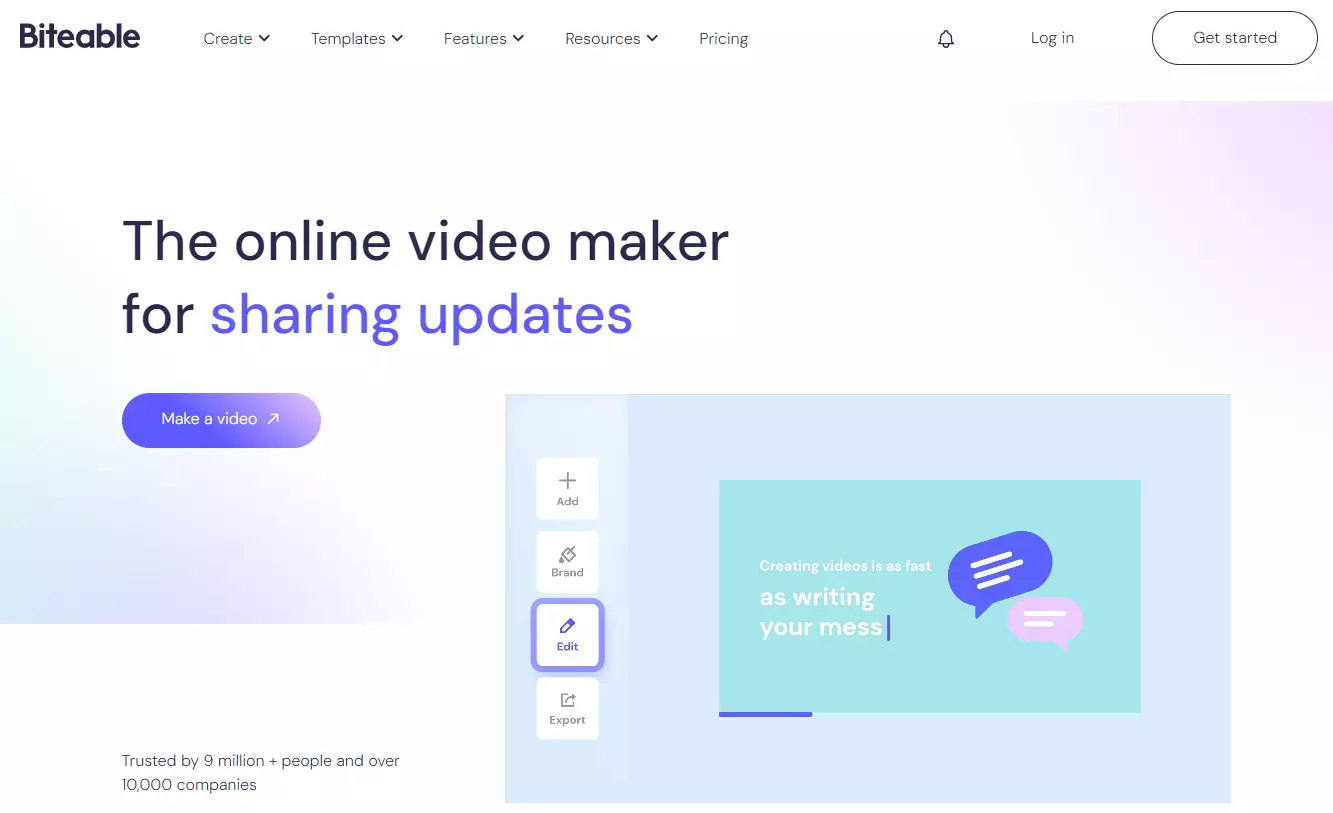
In today's digital landscape, visual content plays a pivotal role in capturing audience's attention and conveying messages effectively.
With the plethora of online tools available, two platforms stand out as frontrunners in the realm of visual content creation: Biteable and Canva.
Both platforms offer a wide range of features and functionalities designed to empower users to create stunning graphics and videos.
In this comprehensive comparison, we'll delve deep into the strengths and weaknesses of Biteable and Canva to help you choose the right tool for your visual content creation needs.
What is Biteable?

Biteable is a comprehensive video creation platform that caters to a diverse audience, from beginners to professionals.
With its intuitive design, extensive asset library, and collaborative features, Biteable simplifies the process of creating high-quality, branded videos.
Key Features of Biteable
1. Intuitive Design: Biteable's user-friendly interface makes it easy for users to navigate and create videos without the need for extensive technical knowledge or design expertise.
2. Extensive Asset Library: Biteable offers a vast collection of stock footage, images, and music, enabling users to enhance their videos with professional-quality assets.
3. Collaborative Features: Biteable facilitates collaboration among team members, allowing multiple users to work together on video projects in real-time.
4. Customizable Templates: Biteable provides a range of customizable templates, making it easy for users to create videos that align with their brand identity and messaging.
5. Direct Social Media Sharing: Biteable integrates seamlessly with popular social media platforms, allowing users to share their videos directly to reach a wider audience.
What is Canva?

Canva is an all-in-one design platform that offers a wide range of features for creating graphics, presentations, posters, and more.
With its user-friendly interface and extensive library of templates and design elements, Canva has become a go-to tool for individuals and businesses alike.
Key Features of Canva
1. Create several types of content: Canva empowers users to design various types of content, ranging from captivating social media posts to informative infographics and professional resumes. Additionally, users have the flexibility to create designs from scratch to meet their specific requirements.
2. Drag and Drop Functionality: Canva's intuitive drag and drop feature enhances user-friendliness, enabling seamless integration of templates and photos into designs with just a few clicks.
3. Various Template: With a library boasting over 50,000 templates, Canva offers users a wide selection to choose from, edit, and customize according to their needs. Furthermore, the platform regularly introduces new templates to enrich its existing collection.
4. Photo Editing: Canva goes beyond basic photo editing functionalities, providing users with beginner-friendly features to enhance their images. Users can blur photos, add text overlays, create collages, and design photo grids to captivate their audience effectively.
5. Stock Images, Icons, and Fonts: Canva provides access to a vast library of free stock photos, icons, and fonts, empowering users to create visually engaging graphic designs. Additionally, users can upload their own photos and seamlessly incorporate them into their designs.
Biteable vs Canva: A Comprehensive Comparison
Now that we've explored the key features of both Biteable and Canva, let's compare them side by side to help you make an informed decision:
1. Ease of Use
Both Biteable and Canva offer user-friendly interfaces, making them accessible to users of all skill levels.
However, Biteable's focus on video creation may be more intuitive for users looking specifically to create videos, while Canva's versatility may appeal to those seeking a broader range of design tools.
2. Asset Library
Biteable offers an extensive library of stock footage, images, and music tailored specifically for video creation, while Canva provides a wide range of design elements and templates for various types of visual content.
3. Collaborative Features
Both Biteable and Canva offer collaborative features that allow multiple users to work together on projects in real-time.
However, Biteable's collaboration features are more focused on video creation, while Canva's collaboration tools are geared toward general design projects.
4. Customization Options
Canva provides users with a wide range of customization options, allowing them to personalize their designs with text, images, and other elements.
While Biteable also offers customization options, its focus is primarily on video editing rather than design.
5. Integration with Social Media Platforms
Biteable and Canva both integrate seamlessly with popular social media platforms, allowing users to share their creations directly to reach a wider audience.
Conclusion: Biteable Vs Canva
In conclusion, both Biteable and Canva are powerful tools for visual content creation, each offering unique features and functionalities to suit different needs and preferences.
If you're primarily looking to create professional-quality videos, Biteable may be the better option for you.
However, if you're seeking a versatile design platform with a wide range of customization options, Canva may be the ideal choice.
Ultimately, the right tool for you will depend on your specific requirements and goals. So, take your time to explore both platforms and choose the one that best fits your needs.

